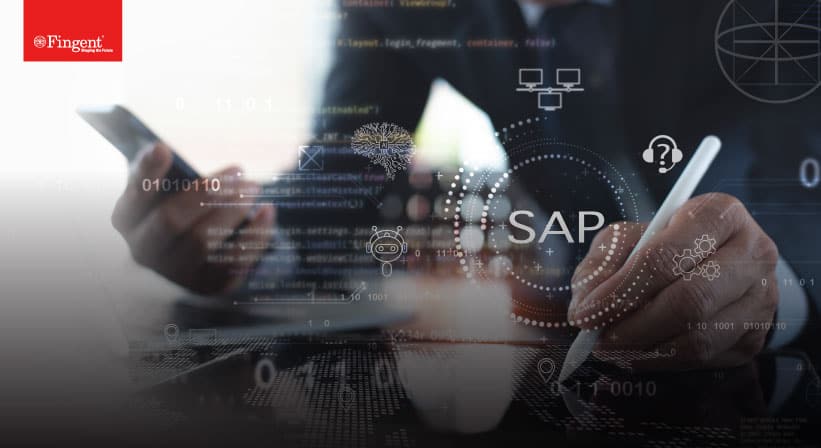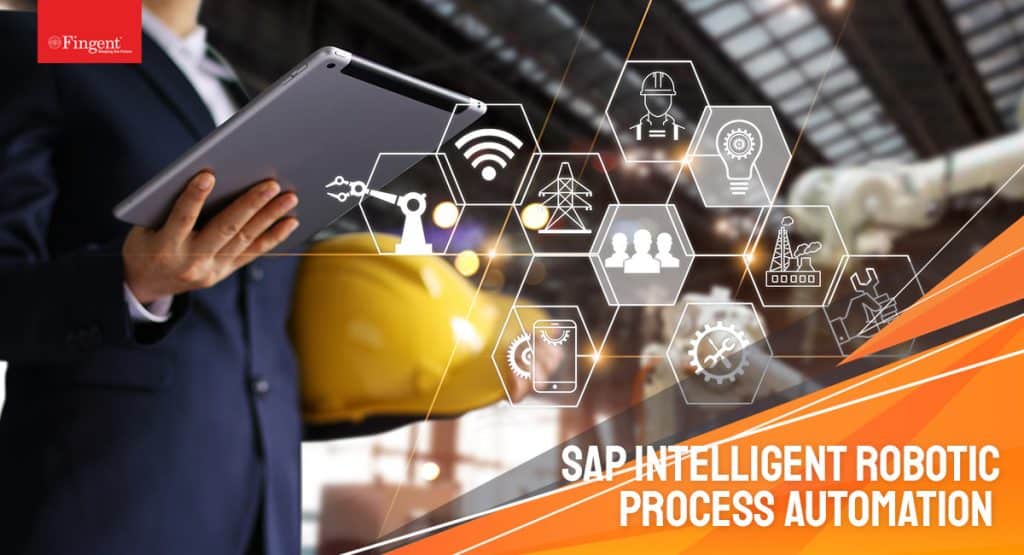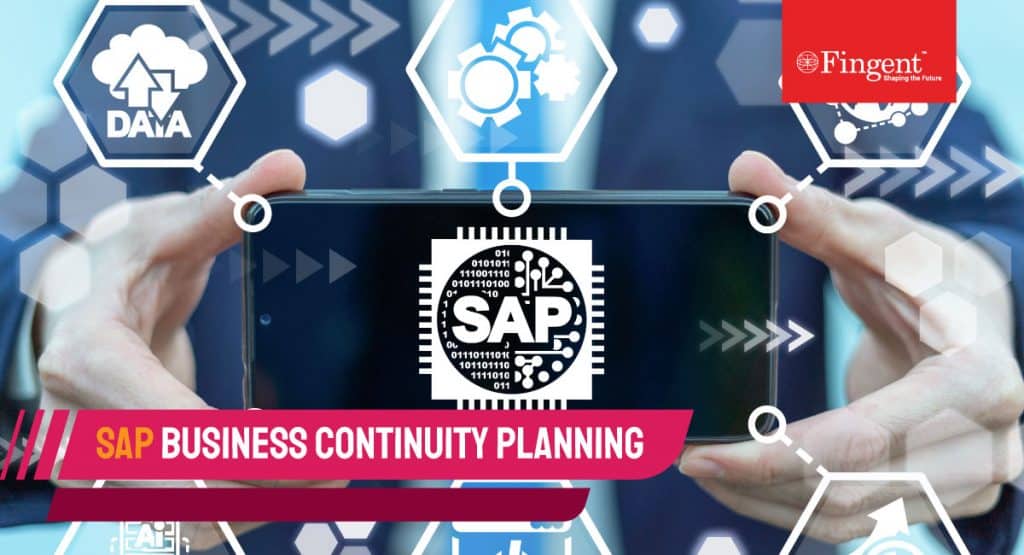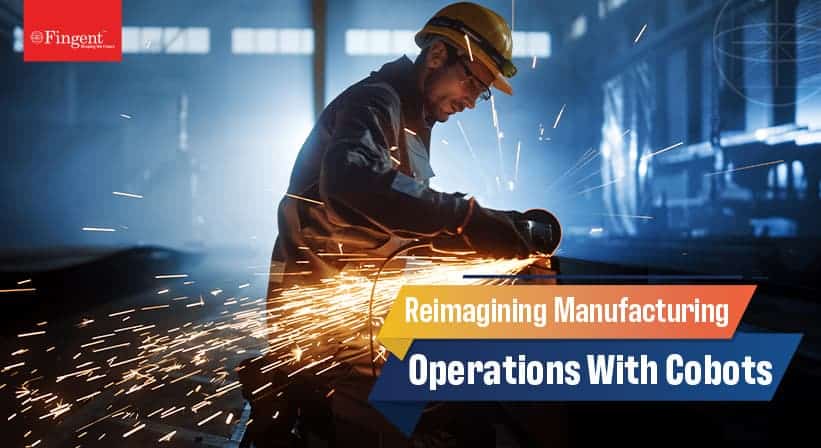Top 6 Ways SAP IRPA Enables Businesses to Embark on Their Hyperautomation Journey
SAP IRPA (Intelligent Robotic Process Automation) enables businesses to hyper automate their mundane processes to achieve process excellence, improve operational efficiency, and augment human intelligence.
How businesses can successfully attain hyperautomation with SAP IRPA
The concept of hyperautomation has created a buzz across the business landscape. As more and more businesses turn to hyperautomation as a solution and adopt RPA, you must be eager to know what it is and if you need to implement it in your business. RPA, IRPA, SAP IRPA … It can get a little confusing, so this blog will aim to decode all this for you and help you on your journey to hyperautomation. We have compiled a list of advantages of embracing hyperautomation with SAP IRPA along with industry use cases for your benefit.
What is IRPA?
IRPA (Intelligent Robotic Process Automation) refers to software programs that can be easily programmed to perform repetitive, tedious, or mundane tasks. One typical example is data manipulation, such as filling in forms, updating spreadsheets, and more. SAP Intelligent Robotic Process Automation powers this automation through SAP’s Business Technology Platform.
Read more: Top 7 Business Benefits of Adopting SAP Intelligent Robotic Process Automation
Advantages of SAP IRPA
By 2020, 53% of enterprises have already started their RPA journey. Interestingly, according to Grand View Research 2020-2027, the RPA market size is expected to reach USD 25.56 billion by 2027. However, just RPA is not enough. Gartner puts it this way: “Enterprise architecture and technology innovation leaders lack a defined strategy to scale automation with tactical and strategic goals. They must deliver end-to-end automation beyond RPA by combining complementary technologies to augment business processes. Gartner calls this hyperautomation.”
It is a clear sign that starting your hyperautomation journey is worth all the effort. Thankfully, hyperautomation with SAP IRPA brings together multiple components that stimulate the ability to automate work.
SAP IRPA: Accelerating the hyperautomation journey of businesses
Here’s how SAP IRPA helps enterprises with hyperautomation:
1. Automate interface monitoring
The application interface helps complete all transactions on any given day. However, the feedback from a transaction failure may not be apparent immediately. Users tend to realize transaction failures only when they check the interface. Checking the interface to ensure that there are no transaction failures is a repetitive and mundane task. Automating this task can save a great deal of time lost in checking for an error within the system. Hyperautomation with SAP IRPA can be used to automate interface monitoring.
Read more: How Automation Ensures Businesses Stay Afloat During COVID-19 Crisis
2. Source-to-pay (s2p) and procure-to-pay (p2p)
Procure-to-pay involves extracting invoice and payment data from multiple systems such as ERP (enterprise resource planning), supplier email, CRM, banks, vendors, and so on. However, not all these systems provide easy integration methods. There will be some form of repetitive tasks on the part of an employee. Thankfully, this is one area SAP IRPA can be an enabler. Hyperautomation with SAP IRPA can fill integration gaps. Since SAP IRPA bots work on the front-end, automating integrations is made easy.
Companies receive information from various sources like invoices, estimates, and quotes. It is crucial to extract the data from these forms and validate them. Hyperautomation with SAP IRPA automates the entire process of procure-to-pay. This will ensure that you are following procurement’s best practices and that there is a single source of truth for all transactions.
SAP IRPA Case Study: Villeroy & Boch
Villeroy & Boch was initially set up as a pottery company in 1748. Currently, it operates internationally, which requires impeccable operational efficiency and seamless workflow across all business functions. Villeroy & Boch thus decided to embark on their hyperautomation journey with SAP IRPA. They chose to rapidly automate simple, mundane tasks such as responding to starred email queries using SAP IRPA. This paved the way to create a fully automated invoice error handling process. IRPA bots increased the efficiency of the workflow while freeing their employees to focus on strategic tasks. SAP IRPA also enabled the organization to assist their wholesale customers in improving Villeroy & Boch’s top line.
3. Purchase order follow-up
A company will have to follow-up on purchase orders sent to their vendors, and the business has to make numerous follow-ups. However, the process of each purchase order remains the same, and it can be very costly. Companies can make their follow-up system much more efficient by embarking on a hyperautomation journey with SAP IRPA. An SAP IRPA bot can be programmed to hunt down and categorize these disparate points into a single report, saving a lot of time and precious resources for the company.
Read more: How Fingent Enables e-Invoicing for SAP Users to Stay Compliant with GST India Regulations
4. Improve user experience
Businesses that see lasting organizational change prefer to start small and eventually progress to change their organization’s entire culture. SAP IRPA can provide a great foundation to begin the hyperautomation journey. It allows you to transform one department or process at a time and then pick momentum. Such gradual momentum will have a positive impact, and your staff will be more inclined to embrace hyperautomation. Such implementation enables businesses to begin their hyperautomation journey with a small budget and in less time.
Here is an example:
Hewlett Packard Enterprise (HPE) was able to do more with less and efficiently remove costly and ineffective work processes with SAP IRPA. The company achieved proof of concept in just 55 days and deployed the full portfolio in as little as four weeks.
Read more: Top 3 UI Offerings from SAP: Fiori, Screen Personas, and Lumira
5. Customer relationship management
Level 1 of the customer contact desk processes a high volume of simple repetitive tasks. When a customer approaches a company with a query or complaint, a customer rep will have to perform the necessary actions by switching between various systems and applications before answering the customer. This has several disadvantages. Besides, this tedious search process may increase customer dissatisfaction. SAP IRPA can help avoid this as you can deploy intelligent RPA bots to manage repetitive tasks.
6. Data consistency monitoring
Most manufacturing companies rely heavily on live production data to make slight adjustments. Inconsistent data can lead to malfunctions across the company’s processes. At the same time, tracing data inconsistency is a mammoth task. However, it is a necessity to find the inconsistency and fix it. With SAP IRPA, a business can schedule automation to handle most of these issues. It can help collect and export the data stream details periodically. This will help in highlighting anomalies before they break the system.
Read more: How SAP Supports Effective Business Continuity Planning
Are you ready to hyper automate?
Is your company ready to set about the journey of hyperautomation with SAP IRPA? Let’s find out together. Fingent works with clients across the globe, helping them understand and implement SAP IRPA in their business. Our experts understand the nuances of different industries and will help you on your journey to success with SAP IRPA.
Leveraging SAP solutions with a Silver Partner of SAP will help you realize the full potential of SAP IRPA hyperautomation. Fingent offers custom implementation and migration services to SAP and can help you move quickly and make the best use of this technology NOW when you need it the most. Let’s get talking.
Stay up to date on what's new

Recommended Posts

25 Apr 2025 Real Estate
SAP for Real Estate: How Smart Tech is Reshaping the Industry
Are you struggling to face the many obstacles in the Real Estate sector? Increasing expenses, volatile markets, and intricate asset management are merely the start. Clients also anticipate smooth experiences—no……

28 Mar 2025 B2B
Cloud ERP Evolution: Why ‘Rise with SAP’ is the Future of Digital Transformation
The digital landscape is advancing at a rapid pace, and if your business isn’t adapting, it isn’t going to survive. Introducing RISE with SAP—a cloud solution that revolutionizes companies. SAP……

20 Mar 2025 B2B
SAP for Startups: A Power Tool For Success in 2025!
In 2025, startups will disrupt sectors. They establish trends and redefine the rules. But here's the catch: even pioneers require a strong strategy. And that’s where technology plays a role.……

09 Aug 2024 B2B
Navigating SAP S/4HANA Migration Risks For Seamless Transformation
SAP ECC is ending support in 2027, leaving leaders with one choice: migration to SAP S/4HANA. This strategic move promises business benefits like improved operational efficiency and advanced analytics. Although,……
Featured Blogs
Stay up to date on
what's new


















